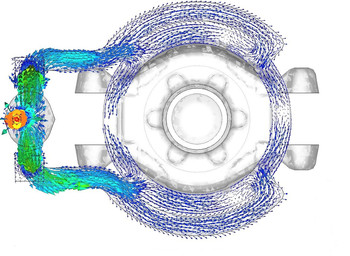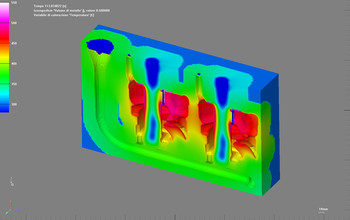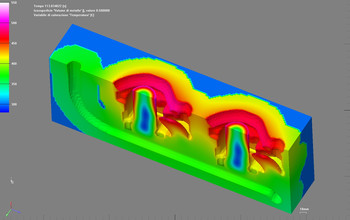Co-design, intended as the ability of a supplier to support the customer in the industrialisation and development phase of a product, has always been one of our company characteristics, trying to establish a comparison between the foundry, tooling department, mechanical processing workshop and the customer, in order to fully meet the demands required by the customer.
When I started working here in the company, I remember the discussions I had with my father about what the boundaries of our competence in metallurgical or mechanical processing were..
Constructing a mould is not only about constructing a three-dimensional shape, but is also about being involved in a new technical adventure, which the foundry, machine shop for processing the casting, the customer and toolmaker are in perfect harmony in working together to develop the project.
In the design phase of the product/process, this philosophy results in the active participation of our engineers in the conception of the product and its industrialisation.
The numerical simulation of the foundry process, in the casting, mould filling and solidifying phases has become an irreplaceable aid in the design phase of a mould.
The founders were wary when this software was introduced into the company ten years ago. It was considered something very flamboyant and theoretical, but actually, not very real or practical.
Time has proven the opposite and today it is a reliable and sought after aid in conceiving an equipment solution that meets the metallurgical requirements of the customer.
During the filling phase, it often gives unexpected results compared to predictions made through experience in the field. For this reason and bearing in mind it is a scientific instrument, it is of considerable help in preventing incorrect solutions in designing the casting system and filling the castings.
It also enables the evaluation of different layout solutions of the mould with time calculation software that is finally reasonable.
This means a drastic reduction in the sample number or developments needed for the moulds to reach the metallurgic features of the castings.
Experience leads us to say that an experienced foundry technician can definitely make the right choice regarding the position and dimensioning of the risers relative to the solidification, while it is not at all easy to predict the course of the metal flows in the cavity of the casting during the filling phase. The CAE simulation software instrument is now a reliable, precise and essential aid to do this.



